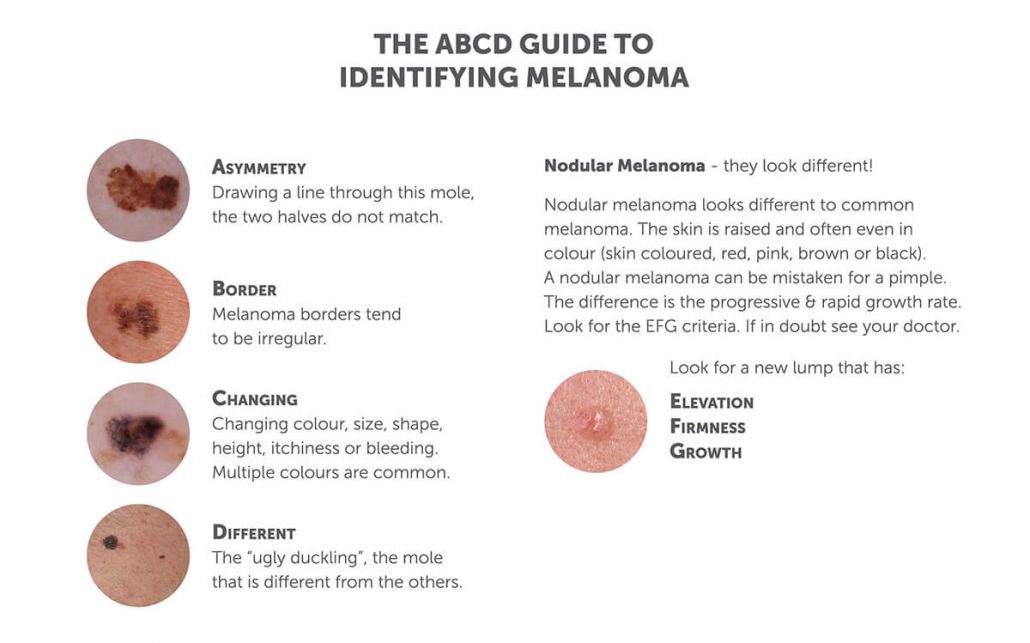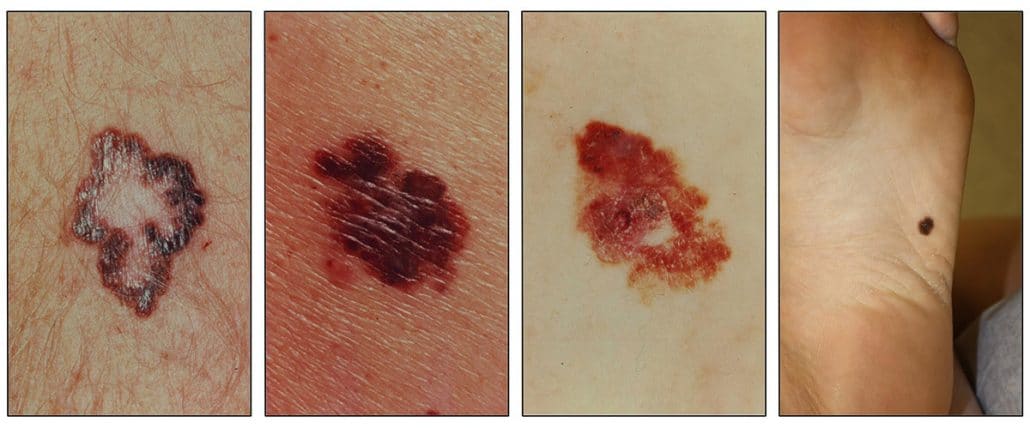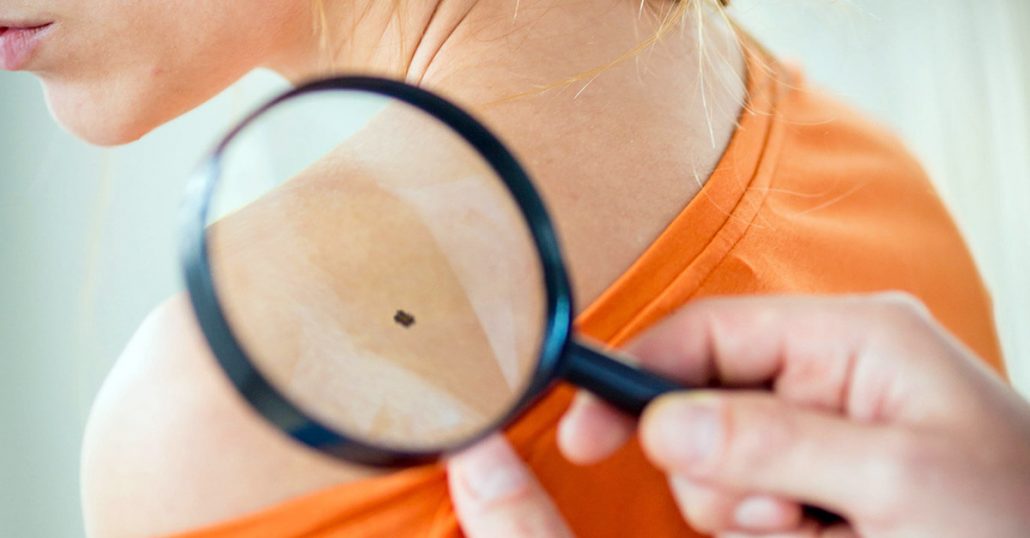We’ve discussed skin cancer before as well as all the different forms it can take. We feel it’s important to talk further about one of riskiest forms of skin cancer: Melanoma. Often confused with moles, this specific type of skin cancer is best treated when melanoma symptoms are detected early; remember, early detection is only possible when regular preventive measures and skin care are a part of our daily lives.
MELANOMA SYMPTOMS
Remember the rule of thumb for melanoma symptoms: ABCDE, an acronym which spells out Asymmetry, Border, Color, Diameter, and Evolution. Each of these characteristics represents the changes you have to look for when self-examining a suspicious mole. For example, moles are usually small, round, evenly colored, and don’t grow or change; in some cases, they may even fade with age. However, if you happen to notice that a mole has grown, changed shape (one half of the mole is different from the other), or has had any changes in coloration, then these are melanoma symptoms that would indicate the mole may become cancerous.
Other melanoma symptoms include the coloration spreading beyond the edges of the mole, uneven borders, or open sores on the blemish that do not seem to heal. We cannot stress enough how important early detection is when fighting malignant melanoma; if left untreated, they can metastasize and affect other organs in the body, which can lead to life-threatening consequences. A quick online search for pictures of melanoma can also better illustrate what malignant melanoma looks like.
Melanoma Symptoms ABCD Guide

MALIGNANT MELANOMA
If you happen to notice any melanoma symptoms or suspicious-looking moles on your body, you should book an appointment as soon as possible with Utah Valley Dermatology & Dr. David Myers or your nearest qualified physician. A skin sample will be taken of the suspicious mole and analyzed; once a diagnosis is made, if the mole is considered dangerous, surgical excision will be performed in a quick and mostly painless treatment. In most cases, when caught early, this surgical removal should prove enough to get rid of the melanoma. However, patients who have already experienced melanoma in the past are at higher-risk to develop it again. For this reason, it is important that former melanoma patients exercise greater caution and self-inspect regularly for any further growths; skin cancer can sometimes counter-attack aggressively after its been removed. Also at risk are people with a family history of melanoma, fair skin, or multiple atypical moles that have appeared with age.
Please be aware that if surgical excision does not get rid of the malignant melanoma growth in its entirety, other treatment may be necessary including immunotherapy, targeted therapy, or, in severe cases, chemotherapy. The best way to avoid going further down a path of more aggressive and harmful treatment is to detect and treat melanomas early. The best advice we can give for this, is to know your body and inspect it regularly. Make checking your skin a weekly practice; learn to look at your body from head to toe in front of a mirror, inspecting your arms all around, your legs, the soles of your feet and palms of your hands, around your neck and inside your groin and other areas that are not usually exposed. It really doesn’t take a long time to do so and the more regularly you inspect, the easier it will be for you to notice any changes to your skin. This goes for not only melanomas, but for all types of skin cancer.

UTAH VALLEY DERMATOLOGY
At Utah Valley Dermatology, we are steadfast and aggressive when treating malignant melanoma as we understand the gravity that it can lead to. If you feel that you have a suspicious mole, unusual change in your skin, or other melanoma symptoms make an appointment with Dr. David Myers as soon as possible so you can get a professional diagnosis.



